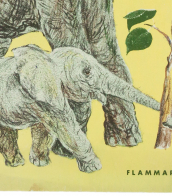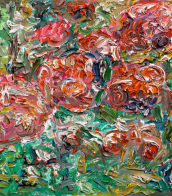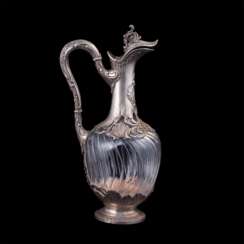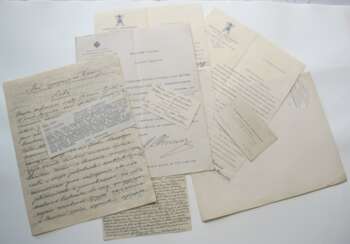пьер












Pierre-Joseph Redouté was a French artist and botanist of Belgian origin, a royal painter and lithographer.
Redouté traveled extensively from his youth and carefully studied the pictorial art of various masters, but his main interest eventually became botanical illustration. He gained access to the Botanical Gardens in Paris and the botanical library. Over time, the talented Redouté became a very popular and successful painter of flowers and plants, publishing more and more albums.
In the 1790s, Redouté was internationally recognized as one of the most popular floral artists in the world. His depictions of plants are still as fresh as if they had just been painted. His album of watercolor illustrations, The Lilies, is one of the most expensive printed books in history.

Etienne-Pierre Ventenat was a French botanist, mycologist and writer.
Etienne-Pierre Ventenat was one of the greatest botanists in France. Empress Josephine Bonaparte hired him to describe and catalog rare plants at her castle of Malmaison. Josephine enlisted eminent botanists such as Claes and Blaikie to collect plants on a grand scale. Ventenat was commissioned to write the text of the work on the Malmaison collection, and the illustrations were created by the talented artist Pierre-Joseph Redoute, nicknamed the "Raphael of Flowers." As a result, a sumptuous book entitled Jardin de la Malmaison (The Garden of Malmaison) was published in 1803.


Madeleine Gras, full name Louise Augustine Madeleine Gras, was a French bookbinder and designer.
Madeleine Gras studied at the Central Union of Decorative Arts and also apprenticed with Henri Nulhac. She designed Art Deco bindings and first appeared in 1922 at the Salon of the National Society of Fine Arts.

Pierre Falké, full name Pierre André Michel Falké, was a French painter and printmaker, illustrator and cartoonist.
Pierre Falké was a well-known humorist in the French press in the first half of the 20th century, collaborating with popular humor and satirical magazines. He drew comic strips and caricatures. In painting, Falké specialized mainly in marine views. He also illustrated more than sixty books and practiced wood engraving.

Pierre Mac Orlan, real name Pierre Dumarchey, is a French writer, poet, screenwriter, playwright, artist and journalist.
Pierre Dumarchey spent his youth leading a bohemian lifestyle, but by the age of 20 he had already published several collections of short stories with his own illustrations. He socialized with many contemporary writers and artists, played the accordion, and many of his songs were quite popular in cabarets. In World War
I in 1916, Pierre Dumarchey was wounded, after which he worked as a war correspondent. In the late 1920s, he became an influential critic of film and photography. And later became a famous writer under the pseudonym Pierre Mac-Orlan. Based on his most famous novel Quai des Brumes ("Port of Shadows"), French director Marcel Carné made a movie of the same name in 1938.
In addition to his numerous novels, Mac-Orlan published under various pseudonyms in erotic magazines. Pierre Mac-Orlan was a very prolific writer: in 1969-1971, a collection of his works in 24 volumes was published, which, however, did not include his many erotic works.

 Пьер Боннар. «Автопортрет», 1889.jpg)
Pierre Bonnard was a distinguished French painter and printmaker, recognized as one of the foremost colorists of modern art. Born on October 3, 1867, in Fontenay-aux-Roses, France, Bonnard initially pursued law studies before embracing his true calling in art. He attended the École des Beaux-Arts and the Académie Julian, where his journey as an artist began in earnest.
Bonnard's art is characterized by its vibrant use of color and the portrayal of intimate, sunlit domestic interiors and gardens. His works often include scenes populated with friends and family, creating a narrative that is both personal and relatable. His distinctive style was influenced by Japanese prints, evident in his use of bold patterns and flat color planes. This influence earned him the nickname "Le Nabi très japonard" among his peers in the Les Nabis group, an avant-garde artists' group he joined in his twenties.
His early work, such as "Woman in Checkered Dress" (1890), showcases the influence of Japanese prints. Bonnard's talent was evident from the beginning of his career, with Claude Roger-Marx noting in 1893 his ability to capture fleeting poses and expressions. His work evolved over time, moving towards a style that resonated with the Intimists' focus on personal and intimate spaces.
Bonnard's wife, Marthe, was a recurring subject in his paintings, often depicted in everyday scenarios. Their relationship, spanning several decades, was a significant influence on his work. His paintings, such as "Dining Room on the Garden" and "Landscape at Le Cannet," demonstrate his mastery in capturing light and color, creating a sense of warmth and intimacy.
Bonnard's work remains influential and celebrated, with his paintings held in esteemed collections worldwide. His ability to transform everyday scenes into vibrant, color-filled canvases has made him a beloved figure in the world of modern art.
Art collectors and experts in the field will find Bonnard's work a study in the transformative power of color and composition. For those interested in staying updated on sales and auction events related to Pierre Bonnard's works, signing up for updates would provide valuable insights into this remarkable artist's enduring legacy.


Pierre-Jules Mêne was a French sculptor and animalier. He is considered one of the pioneers of animal sculpture in the nineteenth century.


Pierre-Jules Mêne was a French sculptor and animalier. He is considered one of the pioneers of animal sculpture in the nineteenth century.


Pierre Soulages was a French painter, printmaker, and sculptor. In 2014, François Hollande described him as "the world's greatest living artist."
Soulages is known as "the painter of black," owing to his interest in the colour "both as a colour and a non-colour. When light is reflected on black, it transforms and transmutes it. It opens a mental field all its own." He saw light as a work material; striations of the black surface of his paintings enable him to reflect light, allowing the black to come out of darkness and into brightness, thus becoming a luminous colour.


Pierre Soulages was a French painter, printmaker, and sculptor. In 2014, François Hollande described him as "the world's greatest living artist."
Soulages is known as "the painter of black," owing to his interest in the colour "both as a colour and a non-colour. When light is reflected on black, it transforms and transmutes it. It opens a mental field all its own." He saw light as a work material; striations of the black surface of his paintings enable him to reflect light, allowing the black to come out of darkness and into brightness, thus becoming a luminous colour.















![[ROJAN].](/assets/image/picture_145031/00ef5/n3ksbtskwls38er8t1ulnq-d5x4r04k52ik-a0un9bcbkcfazmooevjxmg5fz01f1523312656jpg__fix_374_244.jpeg)
![[ROJAN].](https://veryimportantlot.com/assets/image/picture_145031/00ef5/n3ksbtskwls38er8t1ulnq-d5x4r04k52ik-a0un9bcbkcfazmooevjxmg5fz01f1523312656jpg__fix_374_244.jpeg)







![Шантепи-де-ля Сосей, П.Д. Иллюстрированная история религий, составленная в сотрудничестве д-ра Э. Буклей в Чикаго, библиотекаря Г.О. Ланге в Копенгагене [и др.]...](/assets/image/picture_1905525/a93c5/0swrvs0btyyl3y-qreqslktet9flll3ihq9wjnfdncgnluu69oiyxbqt0yukhe1639497058jpg__fix_374_244.jpeg)
![Шантепи-де-ля Сосей, П.Д. Иллюстрированная история религий, составленная в сотрудничестве д-ра Э. Буклей в Чикаго, библиотекаря Г.О. Ланге в Копенгагене [и др.]...](https://veryimportantlot.com/assets/image/picture_1905525/a93c5/0swrvs0btyyl3y-qreqslktet9flll3ihq9wjnfdncgnluu69oiyxbqt0yukhe1639497058jpg__fix_374_244.jpeg)


![[Беранже, П.Ж., Рожанковский, Ф.С. Галантные песни. 16 акварелей Рожана]. Beranger. Chansons galantes. Ornees de 16 aquarelles par Rojan.](/assets/image/picture_4604226/59b65/p13xnsy2-mkpdz5g95spw8mtlux18z9d1ierz1ci-a1fre3yh5uozawmyraah1745692259jpg__fix_374_244.jpeg)
![[Беранже, П.Ж., Рожанковский, Ф.С. Галантные песни. 16 акварелей Рожана]. Beranger. Chansons galantes. Ornees de 16 aquarelles par Rojan.](https://veryimportantlot.com/assets/image/picture_4604226/59b65/p13xnsy2-mkpdz5g95spw8mtlux18z9d1ierz1ci-a1fre3yh5uozawmyraah1745692259jpg__fix_374_244.jpeg)
![[В семье / Ил. Ф. Рожанковского]. En famille / Dessins de F. Rojankovsky; Texte de Marguerite Reynier.](/assets/image/picture_1784521/fa151/kgwxcw5o6cdu5zfazzxrbsofx3sxqucww6zlnok87kz99x5grdqczkbpvs5365i1635787994jpg__fix_374_244.jpeg)
![[В семье / Ил. Ф. Рожанковского]. En famille / Dessins de F. Rojankovsky; Texte de Marguerite Reynier.](https://veryimportantlot.com/assets/image/picture_1784521/fa151/kgwxcw5o6cdu5zfazzxrbsofx3sxqucww6zlnok87kz99x5grdqczkbpvs5365i1635787994jpg__fix_374_244.jpeg)
![[Лида. Тюлень Скаф / Ил. Ф. Рожанковского]. Lida. Scaf le Phoque / Texte de Lida; Images de Rojan.](/assets/image/picture_1784522/0de71/vuh8b4oxhra-2htj9scue2auqovn2dy87kphx3u0gg9n8ljrkkecirqm5btcmc1635787994jpg__fix_374_244.jpeg)
![[Лида. Тюлень Скаф / Ил. Ф. Рожанковского]. Lida. Scaf le Phoque / Texte de Lida; Images de Rojan.](https://veryimportantlot.com/assets/image/picture_1784522/0de71/vuh8b4oxhra-2htj9scue2auqovn2dy87kphx3u0gg9n8ljrkkecirqm5btcmc1635787994jpg__fix_374_244.jpeg)
![[Челли, Р. Большие и маленькие / Ил. Ф. Рожанковского]. Celli, R. Les petits et les grands / Rose Celli; Dessins de Rojan.](/assets/image/picture_1784686/5efb7/yoo7zhdkti-s8-o2i0uwoqr5h5hxqjts4r3h068tndsfkasrlqivu1m0m41c-z2m1635853422jpg__fix_374_244.jpeg)
![[Челли, Р. Большие и маленькие / Ил. Ф. Рожанковского]. Celli, R. Les petits et les grands / Rose Celli; Dessins de Rojan.](https://veryimportantlot.com/assets/image/picture_1784686/5efb7/yoo7zhdkti-s8-o2i0uwoqr5h5hxqjts4r3h068tndsfkasrlqivu1m0m41c-z2m1635853422jpg__fix_374_244.jpeg)
![[Молния. История лошади, кареты и богемцев / Ил. Ф. Рожанковского; пер. Жаклин Андре]. Éclair. Histoire d'un cheval, d'un chien de carrosse et des Bohémiens / Illustrations de F. Rojankovsky; traduit par Jacqueline André.](/assets/image/picture_2303367/3637b/papozvwusxfv5n0wvlq9kvxoqdt282gpzwp9dop9u-jcwixskjf0mc7e6elyp8s1659663047jpeg__fix_374_244.jpeg)
![[Молния. История лошади, кареты и богемцев / Ил. Ф. Рожанковского; пер. Жаклин Андре]. Éclair. Histoire d'un cheval, d'un chien de carrosse et des Bohémiens / Illustrations de F. Rojankovsky; traduit par Jacqueline André.](https://veryimportantlot.com/assets/image/picture_2303367/3637b/papozvwusxfv5n0wvlq9kvxoqdt282gpzwp9dop9u-jcwixskjf0mc7e6elyp8s1659663047jpeg__fix_374_244.jpeg)
![[Молния. История лошади, кареты и богемцев / Ил. Ф. Рожанковского; пер. Жаклин Андре]. Éclair. Histoire d'un cheval, d'un chien de carrosse et des Bohémiens / Illustrations de F. Rojankovsky; traduit par Jacqueline André.](/assets/image/picture_3071919/9e027/veykim4al1keljzuox4-x-glu2g-yqg1x1vikiw82-lh6wrklk7lpxapqmlfdk1692873750jpg__fix_374_244.jpeg)
![[Молния. История лошади, кареты и богемцев / Ил. Ф. Рожанковского; пер. Жаклин Андре]. Éclair. Histoire d'un cheval, d'un chien de carrosse et des Bohémiens / Illustrations de F. Rojankovsky; traduit par Jacqueline André.](https://veryimportantlot.com/assets/image/picture_3071919/9e027/veykim4al1keljzuox4-x-glu2g-yqg1x1vikiw82-lh6wrklk7lpxapqmlfdk1692873750jpg__fix_374_244.jpeg)


























